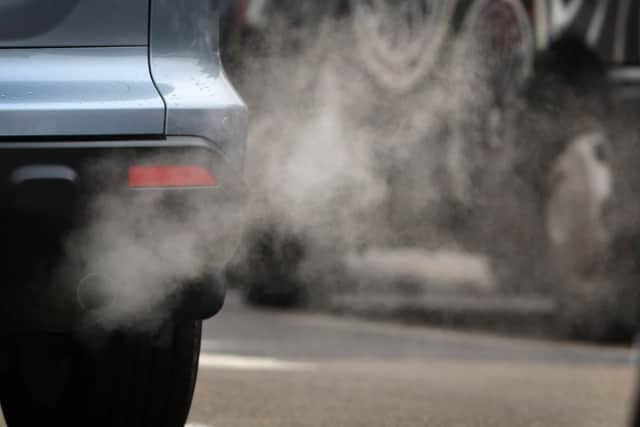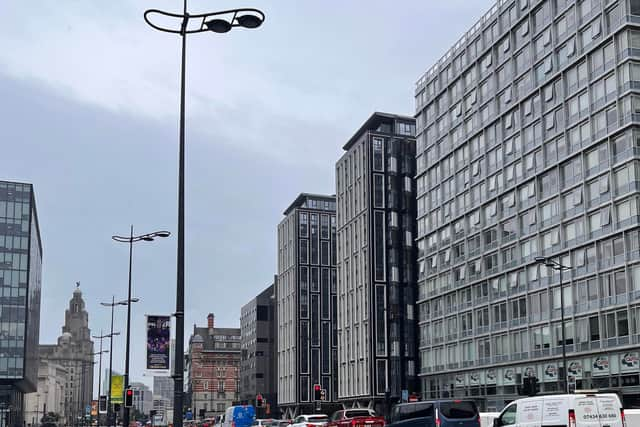Air pollution in Merseyside above World Health Organisation safety limit, new data shows
and live on Freeview channel 276
New Government data shows that particulate air pollution is at unsafe levels across the UK, including Merseyside.
All national monitoring points for pollution were within legal limits but only two were within World Health Organisation safe limit guidelines.
Advertisement
Hide AdAdvertisement
Hide AdMonitoring points and modelled data for Merseyside shows all council boroughs were above the WHO limit.
Around 5% of deaths in people over 30 in the region were attributable to particulate air pollution, according to the recent data.
The Department for Environment, Food and Rural Affairs (DEFRA) said it aimed to cut people’s exposure to particulate pollution by more than a third by 2040, compared with 2018 levels.
But Friends of the Earth called for more to be done. Its air pollution campaigner, Jenny Bates, said: “For far too long too little has been done to protect people from the scourge of air pollution, which particularly affects the young, the elderly and the most disadvantaged.
Loading....
Advertisement
Hide AdAdvertisement
Hide Ad“Particular action is needed to cut levels of the most health damaging fine particles, which can get deep into the lungs and bloodstream and can lead to disease and early death.”
What is particulate air pollution?
Fine particulate matter is an air pollutant that can cause detrimental health effects in high levels. The particulate matter referenced throughout this article, PM2.5, refers to tiny droplets or particles in the air that can enter the respiratory tract and the bloodstream.
These fine particles, far smaller than the width of a human hair, are known to cause asthma, chronic obstructive pulmonary disease and lung cancer. They come mainly from traffic fumes, but also through industrial processes and wood and coal fires.


Last year, the World Health Organisation halved its guideline for a safe amount from 10 to five micrograms per cubic metre.
Advertisement
Hide AdAdvertisement
Hide AdThe hotspot with the worst levels of particulate air pollution last year was a monitoring site off the A35 dual carriageway through Christchurch in Dorset, with an average 12.5 micrograms per cubic metre.
Particulate air pollution in Merseyside
Across the UK, there are 68 sites monitoring levels of PM2.5. Sixty recorded reliable data for 2021, including Tranmere, Wirral.
Defra data shows levels of particulate air pollution above WHO safety guidelines at 58 out of 60 monitoring points last year.
The legal limit fo PM2.5 is an annual average of 20 micrograms per cubic metre. However, According to the WHO, safe levels of PM2.5 are five micrograms per cubic metre.
Advertisement
Hide AdAdvertisement
Hide AdThe 2021 readings for the Tranmere site in Wirral were 7.12 micograms per cubic metre, above the safe limit and up from 6.89 in 2017.
Modelled data for across the UK for 2020 shows that all council boroughs in Merseyside were above the WHO safety guidlines.
Loading....
Modelled average levels of PM2.5 for 2020
- Liverpool: 7.90
- Knowlsey: 7.6
- St Helens: 7.1
- Sefton: 6.7
- Wirral: 6.5
Deaths relating to air pollution
Levels of disease caused by air pollution are on a par with those caused by smoking, according to the WHO.
It estimates that air pollution causes 4.2 million early deaths worldwide each year.
Advertisement
Hide AdAdvertisement
Hide AdUnveiling tougher new guidelines for pollutant levels last year, it said there was “now a much stronger body of evidence to show how air pollution affects different aspects of health at even lower concentrations than previously understood”.


Particulate air pollution contributed to one in every 18 deaths of over-30s in England in 2020, according to Government estimates.
The figures, from the Office for Health Improvement and Disparities, show the death rate was highest in London, with one in every 14 deaths of over-30s thought to be linked to particulate air pollution.
Merseyside deaths attributable to pollution
The latest data shows that the North-West had the smallest percentage of air pollution related deaths.
Advertisement
Hide AdAdvertisement
Hide AdEstimates saw a dip in 2020 because coronavirus restrictions reduced pollution levels, and may have since risen.
Five in every hundred deaths of people over 30 in the North-West were attributed to particulate air pollution in 2020, dropping from 6.22 in 2019.
The highest percentage of deaths was in London, at 7.1 out of every hundred. However, this was an improvement from 8.77 in 2019.
The statistics for Merseyside were (percentage of deaths of people aged 30+ attributable to particulate air pollution (%):
- Liverpool: 5.90
- Knowlsey: 5.65
- St Helens: 5.32
- Sefton: 5.01
- Wirral: 4.88
